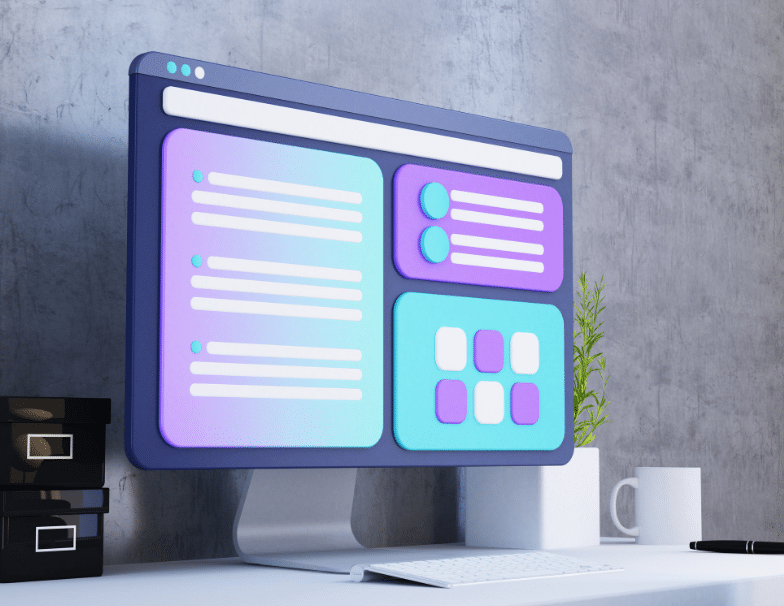What do you value most when you access a website? Some people will refer to ease, intuitiveness, style, adaptability or speed of navigation. These are all qualities and factors associated with UX design, but what exactly is it?
What is UX design? Definition
UX design or user experience design is focused on increasing a user’s level of satisfaction with a product or service by improving its functionality, usability and convenience.
UX design focuses on improving a user’s experience on smartphones, computers, software and websites.
In the end, the user is not linear, but changes his or her behaviour according to technological advances, new types of interactions and preferences. If, for example, the user does not have a good experience or your website does not load quickly, it can interfere with whether or not the user decides to stay there.
At this point, we are already aware of what UX design is for. Depending on the type of design, the user will have a greater connection with what is offered so that, in the case of contemplating the different possibilities and tools, it can provide great value in the process of developing new products and services.
Types of UX design
1. Interaction design
The interaction between a user and the product is essential to achieve permanence and encourage consumption.
2. Visual design
It is important to check how an application looks and feels to navigate. In addition, other aspects such as efficiency, mood, level of entertainment or pleasure also play a role. To achieve a successful visual design, balance, space and contrast as well as colour, shape and size must be taken into account.
3. User research
This relies on companies determining what their customers and users want, seek and need.
4. Information architecture
Structuring and labelling content so that users can find information easily. The two interrelated factors that are particularly important are ease of use and discoverability.
Phases of the UX design process
There are different stages within the UX design process based on understanding user pain points, making user representations, creating user journey maps, developing page layouts and initiating the prototyping phase.
Once the UX design process is complete, the team must present a list of deliverables for review by a client.
Differences between UX design, user interface (UI) design and product design
User experience (UX) design is based on the user’s journey through an application, while user interface (UI) design is about how the exterior of a product looks and functions based on appearances and surfaces.
- Informative components: UI designers use these types of components to enhance reading experiences or provide more information.
- Navigation breadcrumbs: design tools used by UI designers to visually increase the usability of a website.
- Input controls: these provide people with multiple options in response to a question.
A distinction can also be made between UX design and product design, which, although they do not have very significant differences, they do differ in certain details. The product designer is based more on the requirements of the business during the process and must have the user’s needs as a priority when developing solutions.
Thus, the UX designer is user-oriented, while the product designer is also oriented towards the company’s strategy and organisation.
7 UX design tools
There are a variety of tools available to help you in the UX design process, both free and subscription-based.
- Adobe Fireworks: graphics creation
- Adobe XD: prototyping, wireframes and vector design development
- Axure: making user flows and site maps
- Inkscape: vector graphics creation
- Sketch: code export, pixel-precision, prototyping and editing
- Storyboarder: storyboarding and product interaction research
- Toon Boom Storyboard Pro: drawing, animation and camera controls
User research from Infinitia
Infinitia’s strategic design team identifies and understands clients’ needs in order to offer them value propositions. From this point of view, the work encompasses different phases of strategic design, including research, market research, business model analysis and product and service design.
At Infitnia we carry out the global design of your products or services thanks to previous studies on the market, users or business. We offer you solutions adapted to all kinds of scenarios, from a better development of the user experience through UX design to the start-up.
This is the case of initiatives such as the user study to validate a new product interface by measuring the acceptance of new designs and functionalities or the design of an application for the management and purchase of daily meals through Design Thinking, where the design opportunities of an application in the field of cooking are identified.
We have also carried out the analysis of branding strategies for the household appliance sector by understanding the vision of users regarding the different types and the optimisation of searches, and the identification of new business opportunities within the field of IoT with studies of business strategies and users.
To do this, we provide you with innovative solutions in product or service design that we adapt to your needs. Contact us so that we can offer you a design solution for your product or service.





